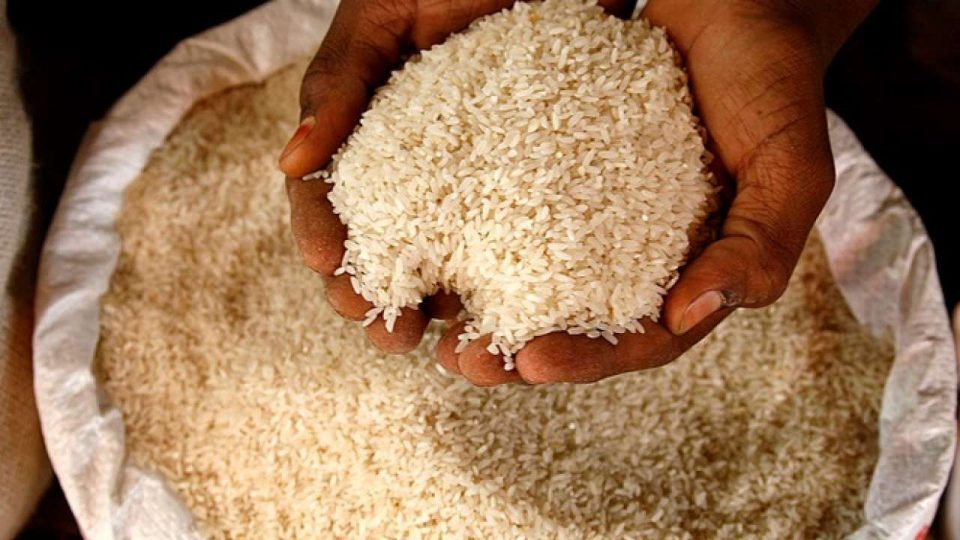Indian rice exports gained momentum this week after an additional port was opened in the country’s biggest rice-handling facility, potentially easing congestion. Waiting periods at the Kakinada Anchorage Port had reached up to four weeks, compared with about a week normally, because of congestion at the port.
“From Saturday we have started using Kakinada deepwater port,” said B.V. Krishna Rao, president of the Rice Exporters Association of India, adding that this will reduce waiting times and accelerate overall exports. Rao said that exporters’ resulting savings in demurrage fees could be passed on to farmers and overseas buyers.
India’s 5% broken parboiled variety of rice eased to $395-$401 a tonne from last week’s multi-year high of $402-$408. Thailand’s 5% broken rice narrowed to $540-$560 a tonne on Thursday, still near 10-month highs.
“There’s muted demand and less supply in the country. There’s not much demand from overseas either because our prices are higher than competitors’,” one Bangkok-based trader said.
Vietnam’s 5% broken rice fell to $505-$510 a tonne on Thursday as harvests in the Mekong Delta gathered pace, down from $510-$515 before the Lunar New Year holiday. Traders said they are buying more rice from farmers in expectation of rising demand from importers, pushing domestic prices of un-husked paddy to a 10-year high of between 6,200 and 7,000 dongs per kg.
The productivity of the winter-spring crop in the Mekong is relatively high, they added. Domestic prices in Bangladesh rose by 35% in 2020 amid low supply and increased demand during the pandemic, according to the United Nations’ Food and Agriculture Organization.
RELIANCE 1,278.40 +5.85 (0.46%)  TCS 3,651.65 +16.15 (0.44%)
TCS 3,651.65 +16.15 (0.44%)  HDFCBANK 1,825.25 +19.30 (1.07%)
HDFCBANK 1,825.25 +19.30 (1.07%)  HINDUNILVR 2,236.75 -7.10 (-0.32%)
HINDUNILVR 2,236.75 -7.10 (-0.32%)  INFY 1,603.55 +5.40 (0.34%)
INFY 1,603.55 +5.40 (0.34%)  HDFC 2,729.95 -17.05 (-0.62%)
HDFC 2,729.95 -17.05 (-0.62%)  BHARTIARTL 1,723.35 -14.20 (-0.82%)
BHARTIARTL 1,723.35 -14.20 (-0.82%)  ICICIBANK 1,336.75 +1.35 (0.10%)
ICICIBANK 1,336.75 +1.35 (0.10%)  KOTAKBANK 2,131.15 -12.20 (-0.57%)
KOTAKBANK 2,131.15 -12.20 (-0.57%)  ITC 409.40 +2.35 (0.58%)
ITC 409.40 +2.35 (0.58%)  BAJFINANCE 8,986.00 +121.05 (1.37%)
BAJFINANCE 8,986.00 +121.05 (1.37%)  MARUTI 11,721.65 -10.05 (-0.09%)
MARUTI 11,721.65 -10.05 (-0.09%)  HCLTECH 1,626.80 -6.50 (-0.40%)
HCLTECH 1,626.80 -6.50 (-0.40%)  SBIN 772.40 +9.05 (1.19%)
SBIN 772.40 +9.05 (1.19%)  NESTLEIND 2,240.15 -3.20 (-0.14%)
NESTLEIND 2,240.15 -3.20 (-0.14%)  ASIANPAINT 2,338.20 +12.00 (0.52%)
ASIANPAINT 2,338.20 +12.00 (0.52%)  WIPRO 272.05 +4.80 (1.80%)
WIPRO 272.05 +4.80 (1.80%)  DMART 4,064.85 +120.85 (3.06%)
DMART 4,064.85 +120.85 (3.06%)  AXISBANK 1,098.50 +2.90 (0.26%)
AXISBANK 1,098.50 +2.90 (0.26%)  LT 3,503.30 +60.70 (1.76%)
LT 3,503.30 +60.70 (1.76%)  HDFCLIFE 682.15 +13.65 (2.04%)
HDFCLIFE 682.15 +13.65 (2.04%)  SUNPHARMA 1,731.20 -26.50 (-1.51%)
SUNPHARMA 1,731.20 -26.50 (-1.51%)  ULTRACEMCO 11,588.50 +189.15 (1.66%)
ULTRACEMCO 11,588.50 +189.15 (1.66%)  ONGC 242.20 +2.50 (1.04%)
ONGC 242.20 +2.50 (1.04%)  BAJAJFINSV 2,005.40 +62.70 (3.23%)
BAJAJFINSV 2,005.40 +62.70 (3.23%)  BPCL 275.95 +2.85 (1.04%)
BPCL 275.95 +2.85 (1.04%)  POWERGRID 294.90 +3.55 (1.22%)
POWERGRID 294.90 +3.55 (1.22%)  TITAN 3,085.65 +28.45 (0.93%)
TITAN 3,085.65 +28.45 (0.93%)  BRITANNIA 4,838.15 -11.65 (-0.24%)
BRITANNIA 4,838.15 -11.65 (-0.24%)  NTPC 360.80 +6.65 (1.88%)
NTPC 360.80 +6.65 (1.88%) 
 TCS 3,651.65 +16.15 (0.44%)
TCS 3,651.65 +16.15 (0.44%)  HDFCBANK 1,825.25 +19.30 (1.07%)
HDFCBANK 1,825.25 +19.30 (1.07%)  HINDUNILVR 2,236.75 -7.10 (-0.32%)
HINDUNILVR 2,236.75 -7.10 (-0.32%)  INFY 1,603.55 +5.40 (0.34%)
INFY 1,603.55 +5.40 (0.34%)  HDFC 2,729.95 -17.05 (-0.62%)
HDFC 2,729.95 -17.05 (-0.62%)  BHARTIARTL 1,723.35 -14.20 (-0.82%)
BHARTIARTL 1,723.35 -14.20 (-0.82%)  ICICIBANK 1,336.75 +1.35 (0.10%)
ICICIBANK 1,336.75 +1.35 (0.10%)  KOTAKBANK 2,131.15 -12.20 (-0.57%)
KOTAKBANK 2,131.15 -12.20 (-0.57%)  ITC 409.40 +2.35 (0.58%)
ITC 409.40 +2.35 (0.58%)  BAJFINANCE 8,986.00 +121.05 (1.37%)
BAJFINANCE 8,986.00 +121.05 (1.37%)  MARUTI 11,721.65 -10.05 (-0.09%)
MARUTI 11,721.65 -10.05 (-0.09%)  HCLTECH 1,626.80 -6.50 (-0.40%)
HCLTECH 1,626.80 -6.50 (-0.40%)  SBIN 772.40 +9.05 (1.19%)
SBIN 772.40 +9.05 (1.19%)  NESTLEIND 2,240.15 -3.20 (-0.14%)
NESTLEIND 2,240.15 -3.20 (-0.14%)  ASIANPAINT 2,338.20 +12.00 (0.52%)
ASIANPAINT 2,338.20 +12.00 (0.52%)  WIPRO 272.05 +4.80 (1.80%)
WIPRO 272.05 +4.80 (1.80%)  DMART 4,064.85 +120.85 (3.06%)
DMART 4,064.85 +120.85 (3.06%)  AXISBANK 1,098.50 +2.90 (0.26%)
AXISBANK 1,098.50 +2.90 (0.26%)  LT 3,503.30 +60.70 (1.76%)
LT 3,503.30 +60.70 (1.76%)  HDFCLIFE 682.15 +13.65 (2.04%)
HDFCLIFE 682.15 +13.65 (2.04%)  SUNPHARMA 1,731.20 -26.50 (-1.51%)
SUNPHARMA 1,731.20 -26.50 (-1.51%)  ULTRACEMCO 11,588.50 +189.15 (1.66%)
ULTRACEMCO 11,588.50 +189.15 (1.66%)  ONGC 242.20 +2.50 (1.04%)
ONGC 242.20 +2.50 (1.04%)  BAJAJFINSV 2,005.40 +62.70 (3.23%)
BAJAJFINSV 2,005.40 +62.70 (3.23%)  BPCL 275.95 +2.85 (1.04%)
BPCL 275.95 +2.85 (1.04%)  POWERGRID 294.90 +3.55 (1.22%)
POWERGRID 294.90 +3.55 (1.22%)  TITAN 3,085.65 +28.45 (0.93%)
TITAN 3,085.65 +28.45 (0.93%)  BRITANNIA 4,838.15 -11.65 (-0.24%)
BRITANNIA 4,838.15 -11.65 (-0.24%)  NTPC 360.80 +6.65 (1.88%)
NTPC 360.80 +6.65 (1.88%) 




